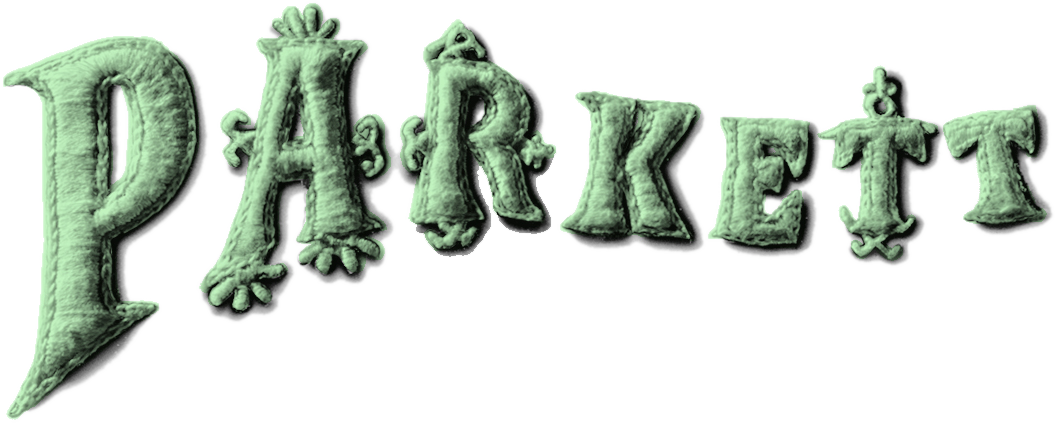Parkett Vol. 57 - 1999 | Doug Aitken, Nan Goldin, Thomas Hirschhorn
Doug Aitken
Read a selected text (PDF)
View edition
Nan Goldin
Read a selected text (PDF)
View edition
Thomas Hirschhorn
Read a selected text (PDF)
View edition
Insert: Doug Aitken (PDF)
Spine: Louise Bourgeois
Cumulus
On Art Scenes in New Zealand and Los Angeles by Connie Butler (PDF)
On an exhibition project at Sir John Soane’s Museum in London by Hans Ulrich Obrist (PDF)
Miscellaneous
Louise Lawler by Andrea Kroknes (PDF)
U.S. & Canada
Please place your order through our distributor D.A.P. here.
Browse Selected Texts and more on the Collaboration Artists
Artist Insert
Editorial
The Margins Within. Where can we actually find the much vaunted margins of society and what do they look like? Do they even exist inasmuch as we have supposedly lost our center and become one vast globalized culture? On studying the work of Doug Aitken, Nan Goldin, and Thomas Hirschhorn in this issue of Parkett, we are at once immersed in instant recognition. With striking immediacy, the works of all three artists bespeak what is commonly called reality. They demonstrate how firmly said “margins” are, in fact, rooted within ourselves, by confronting us with areas of life whose inevitably inscribed boundaries and points of transition define the everyday experiences of each and everyone of us, no matter how we conduct our lives. Thomas Hirschhorn adopts the visual language of outsiders that we encounter as pedestrians in urban conglomerations. He seems to capture the smoke signals of a poor, lost soul in signs and signals that are neither officially dictated nor commercially indicated, in cheap, dilapidated materials, and in expressions that are anything but streamlined. Too thin the pencil stroke, too emphatic the diction—a manifestation of pure, unadulterated amateurism. But Hirschhorn’s references are intentional and conscious; masterful and lucid, they are couched in a disquieting paradox that reveals the grand but inevitably doomed anti-program of the weak. Their subtlety lies in being directed both at the remove of the poet’s life as well as the hard, core business of society. They make cracks in the asphalt, as it were, and inflame our eager, art-oriented minds. Even though Nan Goldin’s photographs display with a “milieu” that may not coincide with our own, we are never placed in the position of being a voyeur. This pinpoints a salient feature of her art and explains why she enjoys such widespread popularity. Nan Golding is a participant of the pictures she shoots. And the gaze directed at her subjects is always loving, always warm. For this reason, when she photographs people in the nude, the effect is an existential rather than a physical nudity. It is a question of the gaze, of an attitude that conveys a communicative aura, and of other wrappings in the space around her subjects, in which they seem to seek sanctuary. The form, the careful composition, the lighting, the coloring create this inimitably dignified framework. In her essay Elisabeth Lebovici writes that Goldin’s more recent pictures of landscapes and nature are invested with the same communicative intimacy and do not describe feelings of distance or infinity. While Nan Goldin aims to demolish fiction with her unbroken faith in photography’s ability to bring us closer to reality, the work of Doug Aitken fuses with a reality that essentially takes place in the mind. The landscapes in his captivating video installations are both mental and real—the overexposed desert enclosed in a barbed wire fence (Diamond Sea), the island evacuated before and after a volcanic eruption (Eraser). The titles themselves are signposts as well, like Electric Earth or 2-Second Separation, or the Parkett Edition, Decrease the Mass and Run Like Hell: a searing, silver kite that rises into the air, a collective psycho-missile, detached from the minds of earthlings, converting a physical process into an emotional state, mirrored in the sparkling cold of the skies. The cover with its two different faceless figures embodies two introverted worlds that still sustain tension with the world outside. The museum door on the back cover has also been transported into the realm of anonymous personal expression with tags and stickers from Hirschhorn’s own inventory. In addition, this volume of Parkett has a surprise in store: contrary to custom, the layout of Thomas Hirschhorn’s section has been designed by the artist himself.
Table of Content
Surface to Air – The Collage Paintings of Donald Bachler
Doug Aitken
Omega Man by James Roberts
Liquid Time by Francesco Bonami
Doug Aitken, the Stalker of this Fin de Siècle by Christine van Assche
Nan Goldin
On the Edges of the Image by Elisabeth Lebovici
Between Worlds – Nan Goldin’s Recent Photographs by Arthur C. Danto
Christine Floating in the Sea, 1999 by Lisa Liebmann
The Party’s Over by Dana Friis-Hansen
Images of Intimacy by Ulmann-Matthias Hakert
Suzanne and Philippe on the Train, Long Island 1985 by Deborah Eisenberg
Thomas Hirschhorn
Thomas Hirschhorn by Robert Fleck
Cheap Tricks – Hirschorn’s Transvaluation Machine by Alison Gingeras
Thomas Hirschhorn, Your Are So Annoying by Philippe Vergne
Reason in Conflict – The War of Différance II by Thomas Steinweg
Louise Lawler – Specters of Modernity by Andrea Kroksnes
John Miller by Lionel Bovier
Fernando Melani: Art and Habitat, Les Infos du Paradis by Rudolf Schmitz
Retrace Your Steps : Remember Tomorrow, An Exhibition in Sir John Soane’s Museum, Cumulus from Europe by Hans Ulrich Obrist
West of Everything, Cumulus from Europe by Connie Butler





